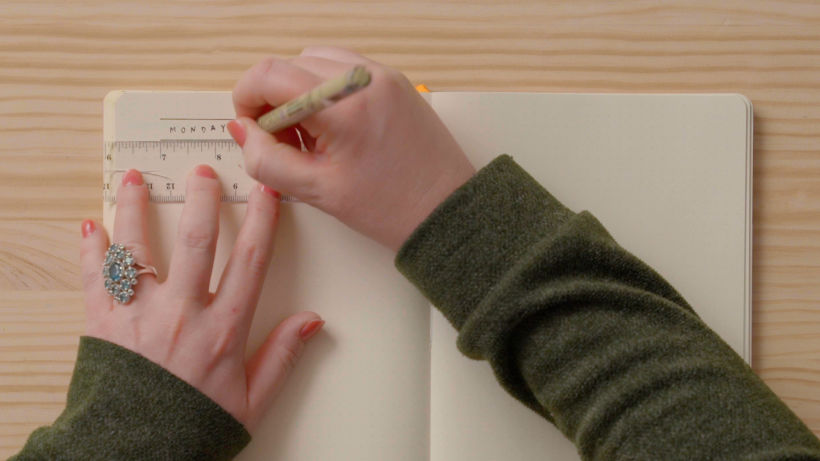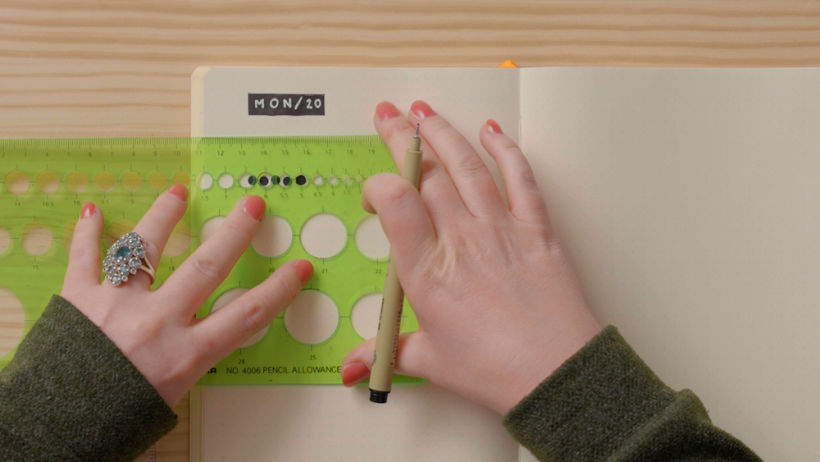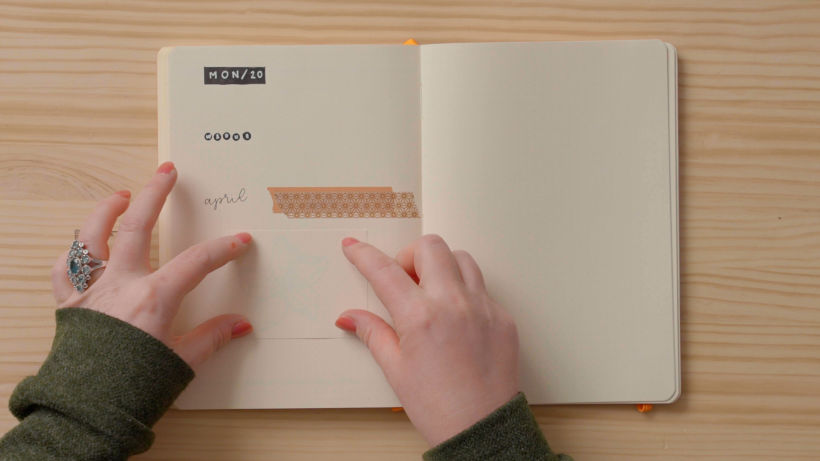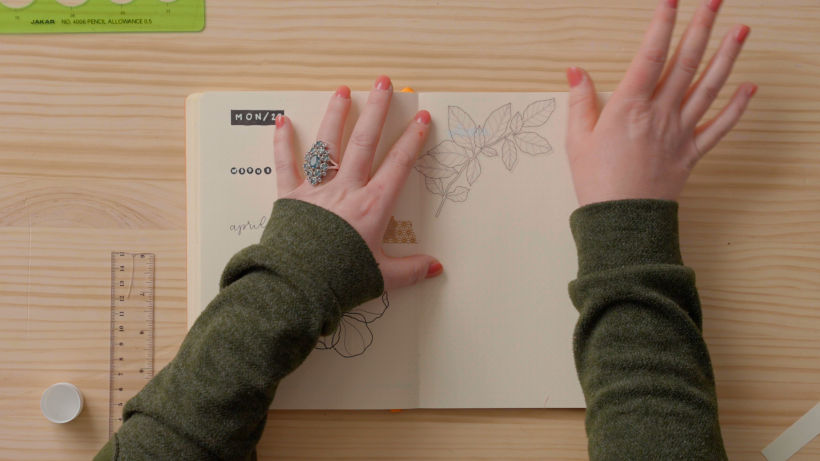Illustration tutorial: How to Correct Bullet Journaling Mistakes
Discover quick tips to cover up common mistakes in hand lettering and illustration using different materials and techniques
Mistakes are a natural part of the creative process, and they certainly don’t have to mean starting over. Over the years, bullet journal artist Annie Weir (@a_journal_by_annie) has developed all kinds of creative solutions for covering up or working with the mistakes she mistakes while working.
Whether you’ve made a spelling mistake in your hand lettering, or you simply don’t like how an illustration is turning out, in this tutorial Annie teaches you how to fix common mistakes in your bullet journal. Watch the video below:
1. Cover mistakes with creative headers
If you’ve made a mistake in your lettering—for example, perhaps you start writing with the wrong size of pen—Annie’s first tip is to turn your error into a creative header.
Over the area where you’ve started writing, use a ruler to draw out a box, and black it out with ink. Then, write over it with your title in white. To draw and color your header box, Annie recommends using a brush pen to cover the area quicker. This type of pen also blends together nicely, so you won’t get a lot of streaks in the inking.
Once the ink is completely dry, Annie uses a gel roll pen in size 10 to write her new title on top of the black box. This way, the lettering really stands out. She recommends repeating this template for the remaining days of the week.

2. Use a circular stencil to create cover-up shapes
Another cover-up technique, if you make a mistake in your lettering, is to use a stencil to create shapes over the area.
In this example, Annie uses a circle stencil to cover up each letter, keeping them in as straight a line as possible to make sure it looks tidy. She then uses a white pen to rewrite the new letters for her word in each circle. For this cover-up, she recommends using a fine liner pen as there’s not much area to cover.

3. Use washi tape as a great cover-up for black ink
Washi tape is available in all kinds of different colors—patterned and plain—making it a useful, decorative tape for creative projects.
If you’re covering up black or another dark ink, a darker washi tape is a good choice to help hide the black underneath it. However, if you do need to add more, layering strips of tape is also a nice way to create impact.
Think about how you can incorporate the tape into your design. For example, if you’re going for a very polished design, you can cut the tape for cleaner edges, or you can rip it (as Annie chooses to do) so it looks more natural.

4. Cut paper from the back of your book as a cover-up
If you’ve made a larger mistake, for example with an illustration, one of Annie’s tried-and-tested techniques is to cut out a piece of paper from the back of her journal and stick it over the area.
Taking a piece of paper from the back of the journal means you’ll hardly notice it’s missing, and when you draw the details, you don’t notice the illustration behind it. If you do see some faint lines showing through, you can incorporate them into your new illustration—for example, Annie uses the faint line of an old petal for her new leaf.

5. Use white-out tape and a decorative sticker
Although white-out tape alone can cover mistakes made using ink, the tape itself is very bright—and sometimes you can still just see the letters showing through.
To solve this problem, Annie recommends using a combination of white-out tape, covered with a decorative sticker that goes well with your design to add another layer. She recommends using stickers with a white or colored background.

6. Roll with your mistake!
Think about how you can play around with letters and words to correct your mistakes. Annie shares an example of intending to write the word “October”, but accidentally starting with the letter “A” for August.
Instead of covering up the mistake, as she was doing a monthly journal log, she changed the word to “Calendar” instead, and added “October” underneath.

If you enjoyed this tutorial, you can learn more about how to create a handmade, stylish, and functional bullet journal using illustration and hand lettering in Annie’s course, Introduction to Illustrated Bullet Journaling.
More resources to improve and inspire your bullet journaling
- Develop skills needed to create a free-thinking planner that expresses your creativity in Louise Chai's online course, Creative Bullet Journaling for Productivity.
- Learn how to organize your lists and improve your hand lettering in these free bullet journal tutorials for beginners.








0 comments